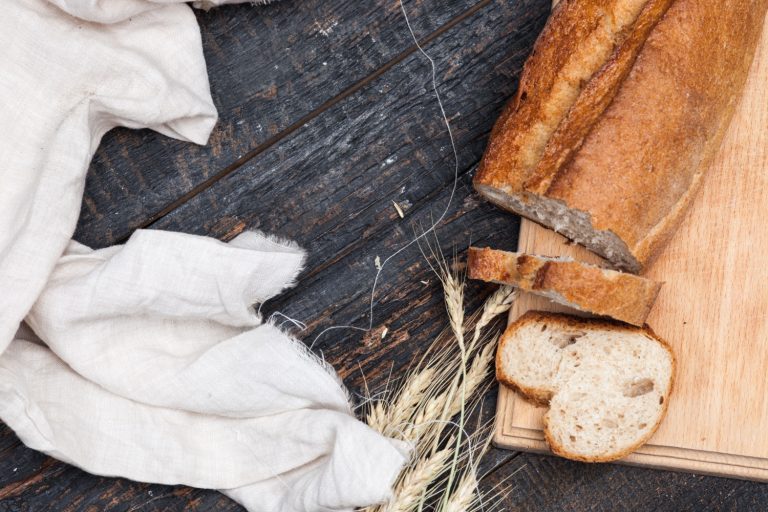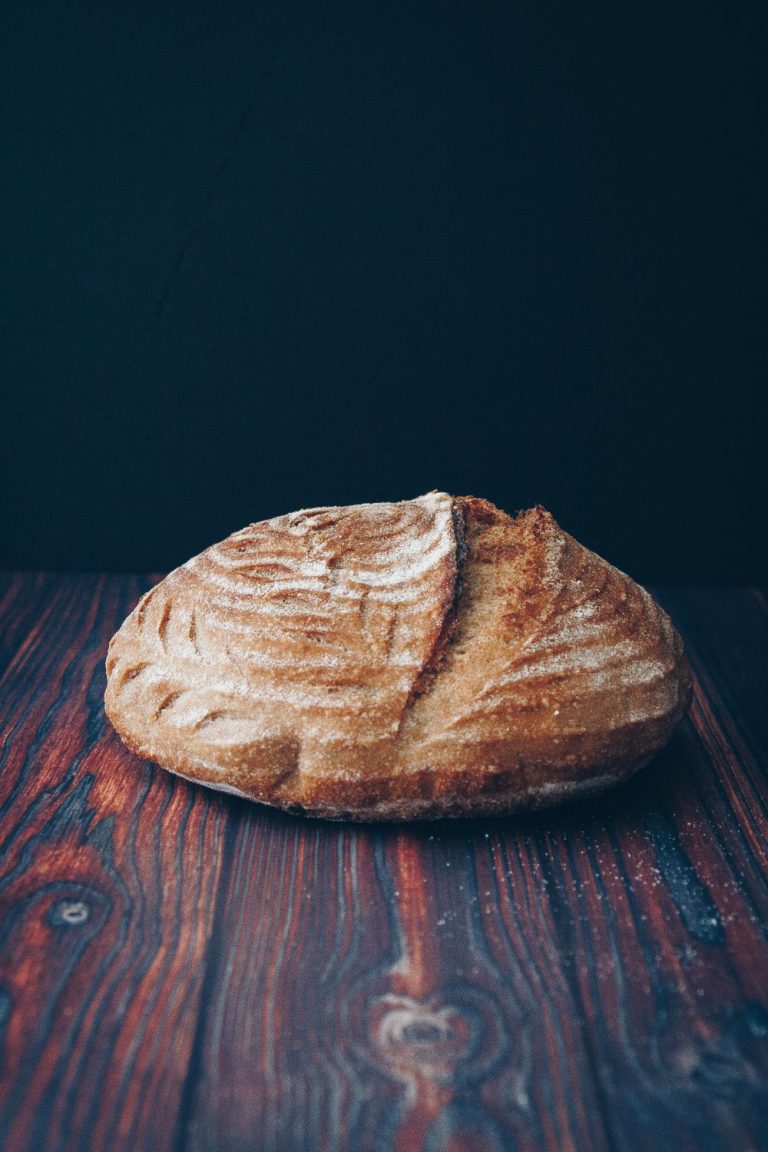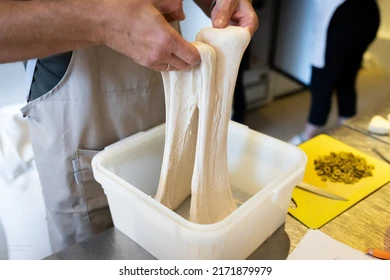How to Master Sourdough Bread Packaging for Sale
Quality packaging is vital to boosting sourdough bread sales. Proper packaging protects your bread and makes it more appealing to customers. Your bread stays fresh, arrives undamaged, and creates a lasting impression on buyers.
This piece covers packaging materials such as parchment and brown paper. You’ll discover the quickest way to wrap both round and standard loaves. Learn about bread wrapping techniques, eco-friendly options, and proper storage methods. The content also shows how to handle branding, labeling, and transportation to drive successful bread sales.
Choose the Right Packaging Materials
The quality and presentation of sourdough bread depend heavily on choosing the right packaging materials. Your choice of packaging will determine how fresh the bread stays and how well it sells while also affecting the environment.
Clear plastic bread bags work great for retail sales, especially for sandwich loaves and sliced bread. These bags give customers a perfect view of the product and provide good protection at about USD 25 per 100 pieces. Artisanal loaves need professional paper bags that let the bread breathe naturally and create an authentic, rustic look.
Here’s how different packaging materials compare:
| Material | Benefits | Best Used For |
|---|---|---|
| Beeswax Wraps | Eco-friendly, breathable, reusable | Whole loaves, short-term storage |
| Paper Bags | Natural look, good airflow, customizable | Boules, batards, wholesale |
| Plastic Bags | Clear visibility, moisture control | Sandwich loaves, retail display |
| Bread Boxes | Balanced environment, professional look | Store display, bulk storage |
Temperature and humidity control plays a vital role in packaging sourdough bread. The bread needs to cool completely before packaging to avoid condensation. Storage temperatures should stay between 68-77°F (20-25°C). Breathable materials work best in high-humidity environments.
Businesses looking to be more environmentally responsible can use compostable bakery packaging from plant-based materials. These products come from corn and sugarcane. They meet customers’ growing demand for eco-friendly options while maintaining high presentation standards.
Design Eye-Catching Labels and Branding
Your sourdough bread sales need a strong visual identity through labels and branding. A thermal label printer provides a professional and consistent way to create high-quality labels without ink-related issues. 3×5 inch labels work perfectly with window bags, letting customers see the product while keeping a professional look.
Brand consistency plays a significant role in all packaging elements. Your visual identity should tell your story as a baker – whether you prefer minimalist black and white or rustic earth tones. Each label needs:
- Product name and weight in grams
- Complete list of ingredients
- Production date
- Business address
- QR code to boost customer interaction
Window bags boost your product’s presentation by showing the bread while protecting it. These bags and consistent labeling help customers spot your brand quickly, especially when you have multiple vendors at farmers’ markets or retail spaces.
QR codes on your labels let buyers connect with your brand digitally. This modern approach can guide customers to product details, social media, or ordering platforms. Your branding elements should tell one unified story about your product’s quality and craftsmanship.
Brand representation should naturally align with your business identity. For instance, a farm-based bakery might choose earth tones and simple designs that show its connection to natural ingredients and traditional methods. This authentic approach creates meaningful connections with customers who value artisanal products.
Master Wrapping and Presentation Techniques
You need to cool sourdough bread before packaging it. This is a vital first step in proper wrapping technique. Premature packaging can lead to soggy bread because moisture gets trapped inside, ruining quality and customer satisfaction.
Professional bakers should take these steps to present their bread well:
- Let bread cool on a wire rack
- Keep packaging material close to cooled loaves
- Wrap with firm but gentle pressure
- Make neat folds to look professional
- Use the proper method to close the package
Your bread’s presentation makes a big difference in market sales. Customers are more likely to buy bread that looks well-wrapped and displayed attractively. Gift presentations look great with natural decorations like dried herbs or flowers. These touches add personality without affecting the bread’s quality.
The bread’s crust stays perfect when you control the temperature during wrapping. Leaving the bag slightly open helps extra moisture escape if the bread still needs to cool down more. Market vendors often put bread in a plastic bag first, then into a paper bag. This keeps the bread fresh and looks great too.
Many professional bakers use the “proofing” technique. They cover the bread with a damp cloth while it cools to achieve the perfect crust texture. This prevents the crust from getting too hard and helps the bread maintain its artisanal quality throughout the packaging.
Implement Proper Storage and Transportation Methods
The quality of sourdough bread depends on proper storage conditions after packaging. Temperature control is a vital part of storage and transportation. The ideal storage temperatures range between 42-148°F based on how you plan to use the bread.
Your commercial storage needs consistent temperatures to keep the bread fresh and control fermentation. Here’s a quick guide to temperatures you should follow:
| Purpose | Temperature Range | Duration |
|---|---|---|
| Active Storage | 70-80°F | 2-3 days |
| Extended Storage | 42-48°F | Up to 1 week |
| Transport | 65-75°F | During delivery |
You should think over these key factors while storing packaged sourdough bread:
- Store bread in a cool, dry spot away from direct sunlight
- Bread boxes help control humidity and stop mold from growing
- Keep the bread out of the refrigerator as it makes bread stale faster
- Good air circulation helps preserve the bread better
- Your local climate should guide your storage approach
Bread boxes are great for transportation because they effectively balance moisture control and protect the loaves. You can use moisture-control packets in humid areas to prevent excess dampness. Climate adaptation is significant—you might need extra cooling measures to transport bread in warmer regions, while drier areas need sealed packaging to keep moisture in.
Professional bakers often use specialized proofing boxes to store bread at controlled temperatures, especially when managing multiple orders. These boxes can hold up to 2L jars and maintain exact temperatures, so your bread stays fresh from storage until delivery.
Conclusion
Quality sourdough bread packaging just needs several key elements that create product success. Bakeries should use breathable paper bags or clear plastic packaging to present their bread properly while keeping its quality intact. Suitable packaging, attractive branding, proper wrapping methods, and reasonable temperature control help create professional products that excel in competitive markets and preserve the bread’s artisanal qualities.
Bakeries can build strong customer relationships and become trusted artisanal bread producers when they package their products well. Good packaging protects bread quality during storage and transport while showing value through consistent branding. Bakers who want to lift their sourdough game can lift their bread and pizza game with an authentic artisanal sourdough starter from The Yeast We Can Do. Email john@theyeastwecando.com. This starter works great for passionate home bakers and restaurant owners who want that distinct tangy flavor and signature crust. These detailed packaging methods, quality ingredients, and proper techniques help sourdough bread businesses succeed in today’s competitive market.
FAQs
What is the ideal packaging for sourdough bread?
A 100% linen bag is excellent for maintaining the crustiness of sourdough bread.
How should sourdough bread be packaged?
Using plain paper bags or kitchen towels prevents the bread from drying.
What are some effective methods to package homemade bread for sale?
First, ensure the bread is completely cooled before packaging. Trim the edges and divide the loaf into equal portions. Wrap each portion in food-grade, greaseproof paper and place it in an outer plastic bag to ensure it remains secure during delivery.
What techniques are recommended for packaging and selling sourdough starters?
For shipping, you can prepare a stiff starter mixture and place it in a plastic bag within a loosely lidded mason jar, ensuring it is three-quarters empty to allow for rising. Alternatively, drying the starter is a good method for shipping or keeping it as a backup.
What are some practical yet presentable ways to package sourdough bread for customers?
While cake boxes might seem too fancy, they are a viable option if you’re looking for a more professional presentation. Alternatively, consider using branded paper bags or simple, clean grocery bags tied with a decorative ribbon or string for a more rustic look.






